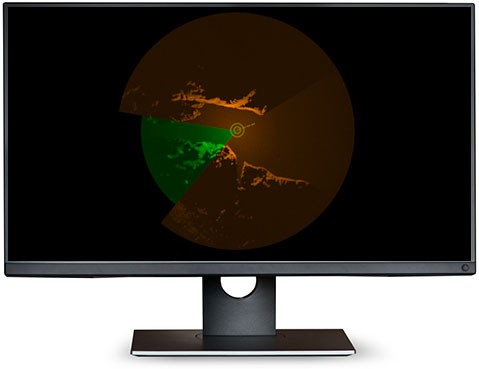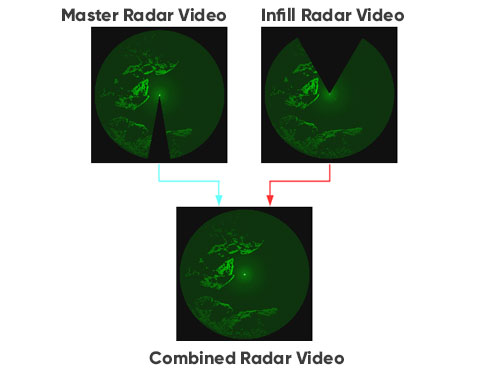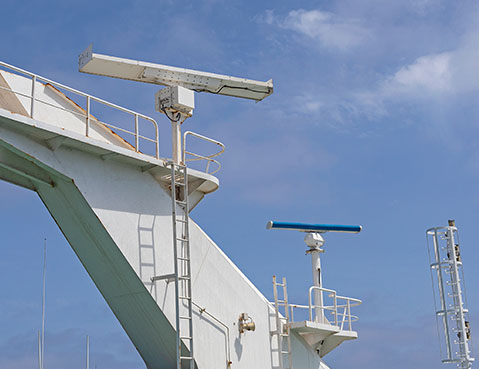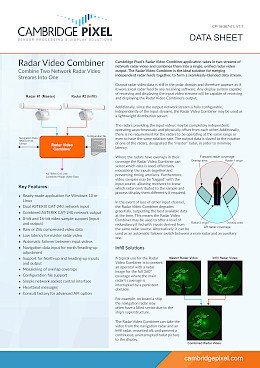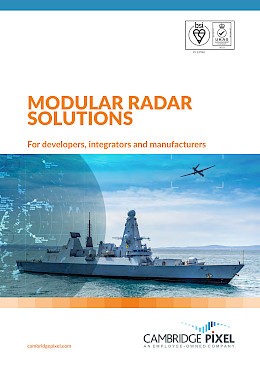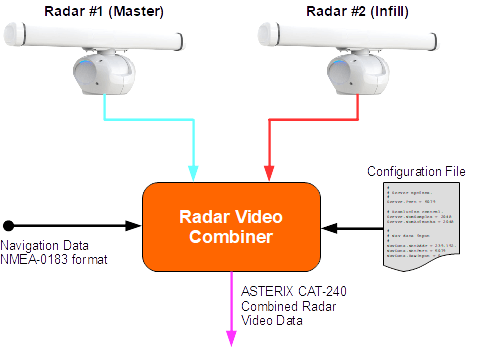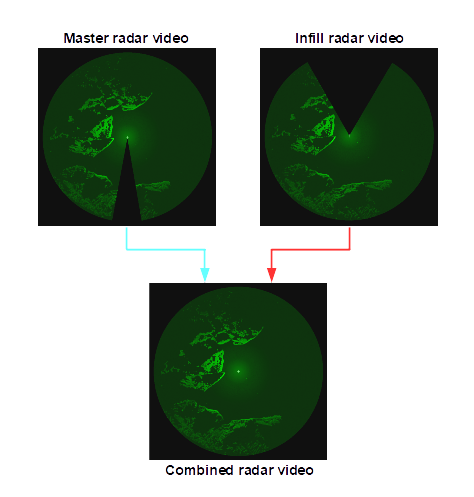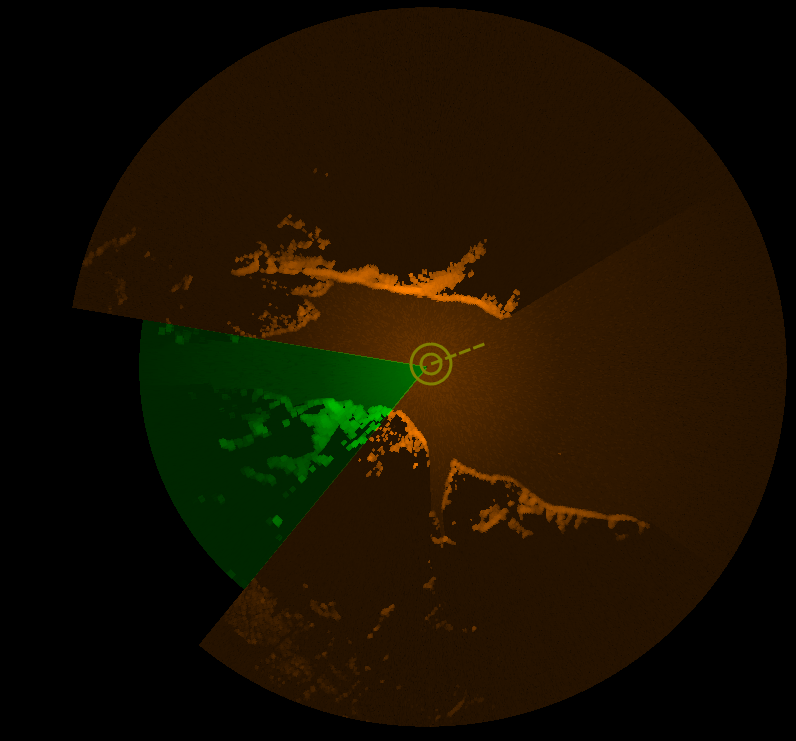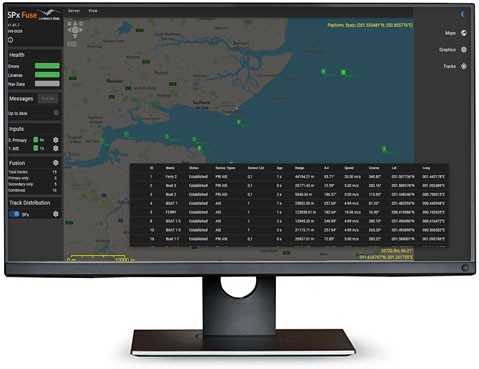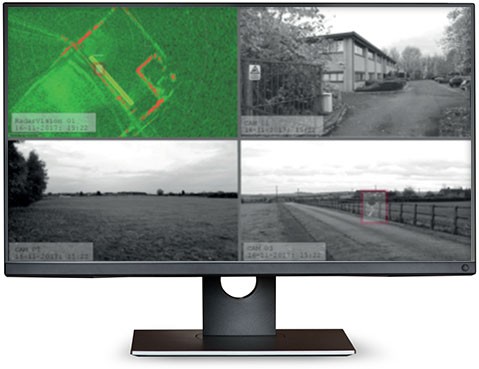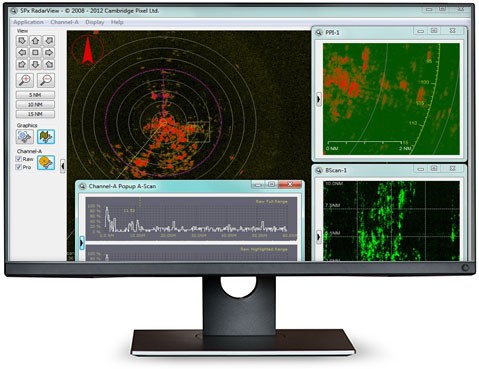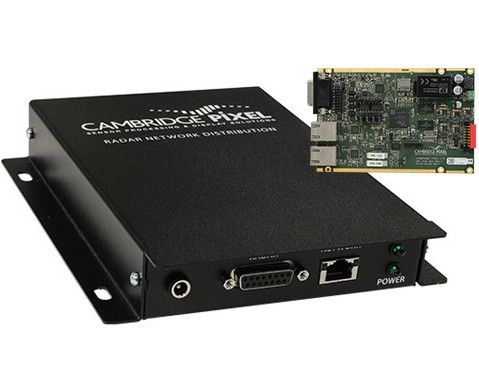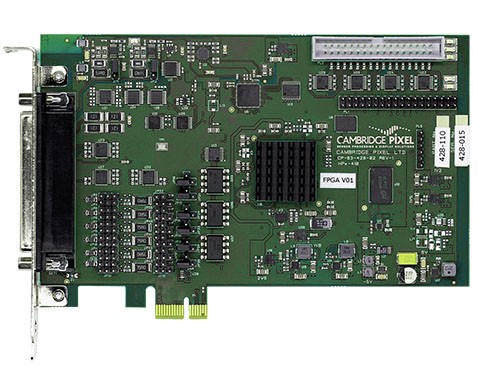Infill
A typical use for the Radar Video Combiner is to present an operator with a radar image for the full 360° coverage where the main radar's coverage is interrupted by a persistent obstacle. For example on-board a ship the navigation radar may often have a blind sector due to the ship's superstructure. The Radar Video Combiner can take the video from the navigation radar and an infill radar, mounted aft, and present a continuous, uninterrupted radar picture to the display.
Typical application areas for the Radar Video Combiner include: windfarm mitigation, security installations and coastal surveillance. Essentially anywhere where a main radar has a region of poor or unreliable coverage that may be covered by a second radar.
Redundancy
In the event of loss of either input channel the Radar Video Combiner degrades gracefully, outputting the best available data at the time. This means the Radar Video Combiner may be used to offer a level of redundancy if fed with inputs derived from the same radar source. Alternatively, it can be used as an automatic failover switch between a main radar and an auxiliary one.
- Combines two overlapping radar videos
- Accepts ASTERIX CAT-240 inputs
- ASTERIX CAT-240 output
- 8-bit or 16-bit input data sample support
- Output 8-bit or 16-bit samples
- ZLIB compression support
- Configuration file
- Network socket remote control interface
- Automatic failover (redundancy)
- Master/slave operation, with graceful degradation
- Mosaicking of overlap coverage
- Available for Windows and Linux


